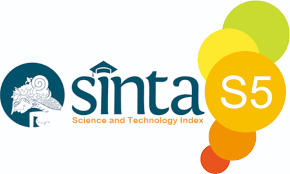THE COMPARISON BETWEEN STAD +3R BASED ON DIGITAL MEDIA METHODS AND THE COOPERATIVE MODEL STAD TYPE IN WRITING EXPLANATION TEXT
DOI:
https://doi.org/10.22460/jler.v3i2.p54-62Abstract
Â
Â
The research was backed by Permendikbud number 37 the year 2018, students need to master the technology in writing, thus it takes the right learning method in line with the Permendikbud, researchers offer a method of innovative study that is the method of the STAD + 3R based digital media. The writing that corresponds to KI KD is one of the explanation text. The purpose of this research is to learn the students ' learning outcomes in writing the explanation text based on digital media and the different methods STAD +3R based digital media with STAD. The research methods used are quantitative comparatively with the quasi-experiments in the form of a Nonequivalent control group. The population in this study was 300 students of grade VIII SMP Negeri 3 Padalarang. Sampling uses purposive sampling and obtained class VIII B as an experimental class as many as 30 students and class VIII A as a control class as many as 30 students. The results showed an average increase in the value of 21.87 points or 28% from 56.13 to 78. The significant difference through the statistical test with a signification value of 2-tailed test T independent sample test is 0.03 < 0.05, it can be concluded there is a meaningful difference between the STAD class with the STAD +3R class, the student performance in the STAD +3R class generates digital products in the form of Vlog, Pptx and E-book, while the STAD class does not produce digital products.
Â
Keywords:Â explanation text, innovative methods, methods of STAD +3R based digital media.
Â
Â
References
Arikunto, S. (2014) Prosedur penelitian suatu pendekatan praktik. Jakarta: PT. Rineka Cipta.
Cahyadi, Y. (2018) Eksplansi Semesta Jilid 1: adidaya bumi. Jilid 1. Bandung: Puataka Humaniora.
Cahyadi, Y. (2019) Eksplansi Semesta Jilid 2: eksplorasi angkasa raya. Jilid 2. Jakarta: Persada Abadi.
Cresswell (2009) Research Design:Qualitative, Quantitative, and Mixed Methods Approaches.(3th edition). Los Angeles: SAGE Publications, Inc.
Kadir, A. (2013) Pengenalan sistem informasi. Yogyakarta: Penerbit Andi
Kemendikbud (2018) Permendikbud Nomor 37 tahun 2018. Jakarta: Kemedikbud.
Kosasih (2017) Buku teks bahasa Indonesia SMP/MTs Kelas VIII Edisi Revisi 2017. Jakarta: Kemedikbud.
Mahsun (2014) Metode penelitian bahasa. Jakarta: Rajawali Press.
Slavin, R. (2000) Educational psychology: theory and practice. New Jersey: Pearson Education.
Slavin, R. (2012) Cooperative learning teori, riset dan praktik. (terjemahan Zubaedi). Bandung: Nusa Media.
Sugiyono (2014) Metode penelitian kuantitatif kualitatif dan R&D. Bandung: Alfabeta.
Wikanengsih, W. (2013) ‘Model Pembelajaran Neurolinguistic Programming Berorientasi Karakter Bagi Peningkatan Kemampuan Menulis Siswa SMP’, Jurnal Ilmu Pendidikan Universitas Negeri Malang.






